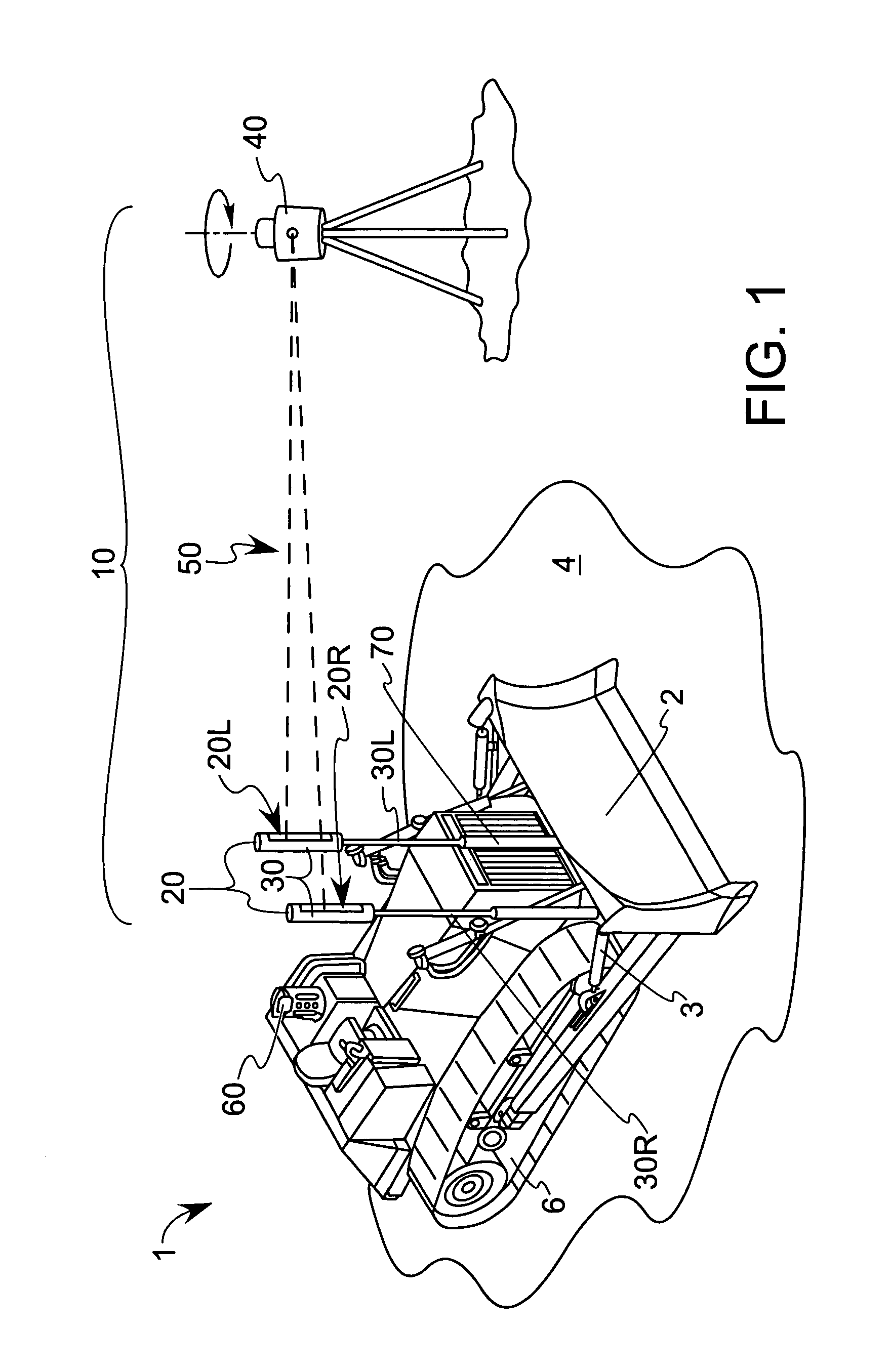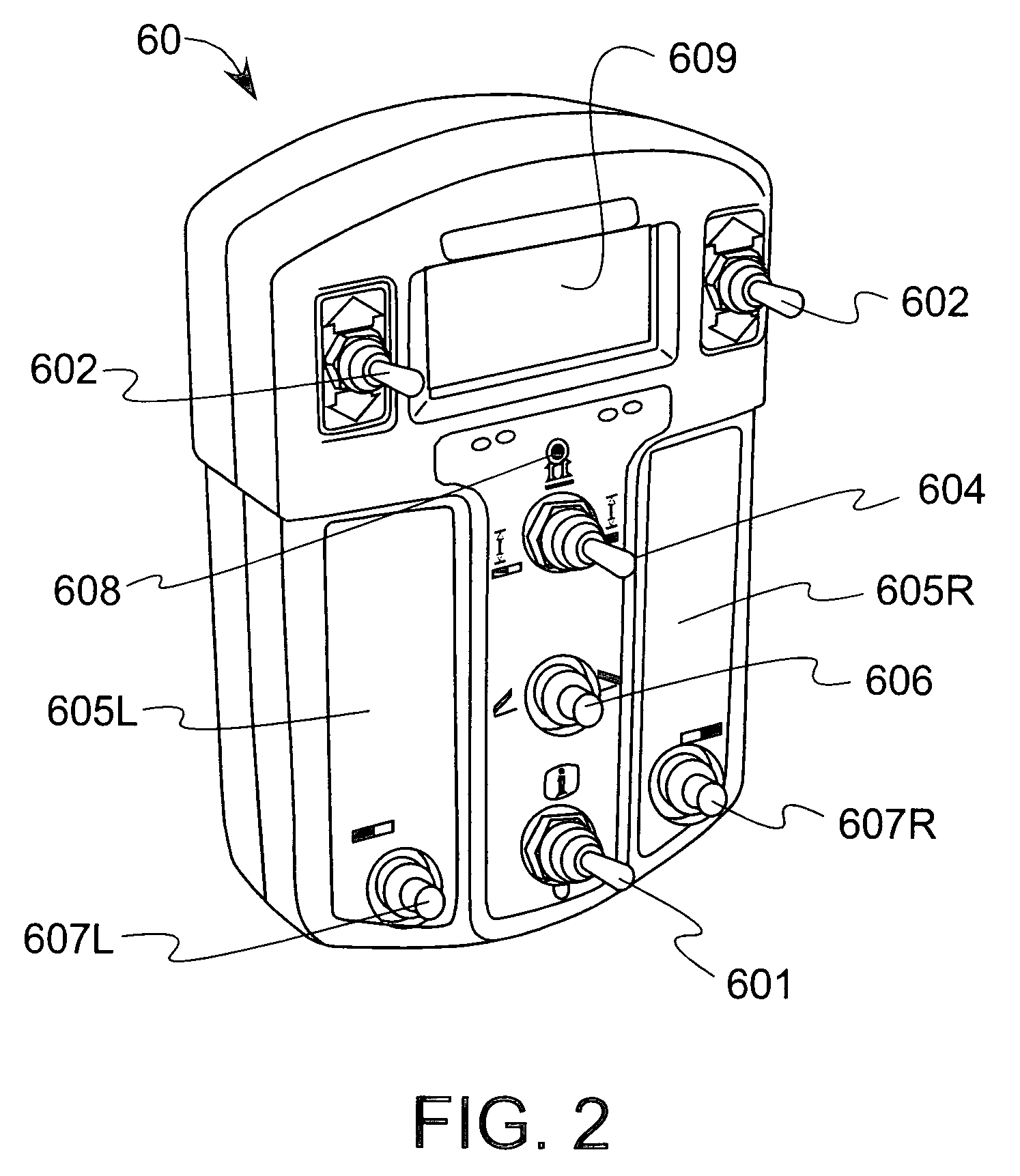Linked mode for a multi-axis machine control
a multi-axis machine control and linked mode technology, applied in the direction of adjusting devices, instruments, ways, etc., can solve the problems of time and distraction, additional operator oversight, and additional complexity of the control system, so as to facilitate signal communication, facilitate user operation, and promote consistent, accurate apparatus setup
- Summary
- Abstract
- Description
- Claims
- Application Information
AI Technical Summary
Benefits of technology
Problems solved by technology
Method used
Image
Examples
Embodiment Construction
[0022]FIG. 1 shows an earth-grading machine 1 according to an aspect of the present invention, including a dual laser elevation machine control system 10 used to establish grade and to maintain elevation control for a contouring blade 2 mounted to the machine 1. While shown in its present configuration for use with construction earth-grading machinery 1, control system 10 can also be used with agricultural equipment as well. The control system 10 includes detectors 20 that are mounted to the machine 1 through optional masts 30. It will be understood that subsequent discussion of detectors and their corresponding masts in the general sense will include reference numbers 20 and 30, respectively, and that the references to a left and right detector 20L, 20R and a left and right mast 30L, 30R are made manifest from the drawing. Masts 30L, 30R, which may include telescoping features 70, can be either manually, hydraulically or electrically adjusted, the latter two cooperative with a moto...
PUM
 Login to View More
Login to View More Abstract
Description
Claims
Application Information
 Login to View More
Login to View More - R&D
- Intellectual Property
- Life Sciences
- Materials
- Tech Scout
- Unparalleled Data Quality
- Higher Quality Content
- 60% Fewer Hallucinations
Browse by: Latest US Patents, China's latest patents, Technical Efficacy Thesaurus, Application Domain, Technology Topic, Popular Technical Reports.
© 2025 PatSnap. All rights reserved.Legal|Privacy policy|Modern Slavery Act Transparency Statement|Sitemap|About US| Contact US: help@patsnap.com



